
Japan is a beautiful country with a history of emperors and samurai, unique culture and religion, ancient temples, impressive castles, and stunning nature.
Japan never ceases to amaze and it's one of my favorite countries in the world. Over the years, we've made quite a few trips to Japan; the last one was in October 2023.
Altogether we've spent almost two months exploring Japan and I'd love to go back for another trip.
This Japan itinerary gives you several options to explore this truly unique nation, depending on your preference and the amount of time you have available.
It includes some of the most popular places to visit and things to do in Japan, but also several off-the-beaten-path destinations.
Japan itinerary
Disclosure: Some links in this post are affiliate links. If you make a purchase through one of these links, we may earn a small commission (at no extra cost to you!). We're very grateful when you use our links to make a purchase:-).

Itinerary for Japan and Japan travel map
You can find our itinerary of Japan on the map below, as well as our accommodation and the highlights we visited during our trip to Japan.
Click here for the interactive map
The perfect one month itinerary in Japan

- Day 1-7: Eat your way through Osaka and enjoy the city’s streets and tranquil shrines. Then, pay a visit to Universal Studios.
- Day 7-9: Try the world-famous wagyu beef in Kobe, visit the museums in Hiroshima and explore the lovely island of Miyajima.
- Day 9-11: Visit the magical Kyoto. Stroll around historic neighborhoods, learn about Japanese culture, and admire beautiful temples and the famous Fushimi Inari-Taisha Shrine. After that, explore ancient temples in Nara and hike the Koyasan pilgrimage trail.
- Day 11-18: Take a road trip around Hokkaido, Japan's wild and untamed northernmost island with stunning scenery. Alternatively, stay in Sapporo and enjoy little daytrips to the nearest fun locations (like Asahiyama Zoo or nearest port town of Otaru).
- Day 18-28: Explore Tokyo. Visit ancient temples, marvel at modern buildings, relax in one of the many parks and eat your way around this bustling city.
- Day 28-33: Go off the beaten track in the Japanese Alps and visit Kanazawa, Shirakawa-go, Takayama, Kamikochi, and Matsumoto.


One-month Japan itinerary
Our recent trip to Japan in fall of 2023 was the most epic one: We spent 10 days in Osaka, then an entire week in Sapporo, before polishing off our stay with 10 days in Tokyo. Taking into account all the new and old information, we’ve created this perfect masterpiece — our extended and improved itinerary for an entire month in Japan!
I have written extensive guides for the majority of all the places we visited in Japan, with more information about our day-to-day activities, transportation, and accommodation.
You can find the links to those detailed posts in the itinerary below. If you don't have that much time available to explore Japan, don’t worry, I’ve got you covered.
Further on in the post, I also suggest shorter options (7 and 10 days, plus 2 and 3 weeks) for your Japan travel itinerary.
Day 1 – 7: Osaka

✔️Osaka cheat sheet:
- How to get around Osaka? Get an ICOCA IC Card (it comes with Kansai Thru Pass, perfect for moving around the cities). If you plan on being Osaka-bound for a few days in a row, without peeking outside city limits, then Osaka Metro Pass will be fine.
- Where to stay in Osaka? 4* Miyako City Osaka Hommachi (from $130 a night) is a great option for travelers. The hotel is located close to the train station, and the nearest tourist attractions are only a stop away!
- What to book in advance for your time in Osaka? A ticket to teamLab Botanical Garden and a Universal Studios pass.
- Where to learn more about Osaka? Our 1-Day Osaka itinerary is a treasure trove of things to do and see in this marvelous city.
Osaka is a great first stop on our 1-Month Japan Itinerary, and here’s why: The city has the best balance between tradition and modernity. Here, you can ease into the culture that is so different from the ones you’ve experienced before. If you get easily overwhelmed by neon-lit loud main streets, take a step back into nature — thankfully, Osaka has got the best of both worlds!
Apart from having the best time by eating your way around Osaka (after all, the proud title of the Nation’s Kitchen didn’t come from nothing), there are a few places that you absolutely must visit to get the most well-rounded experience of the city:
📍Tsutenkaku Tower: Osaka’s very own Eiffel Tower, this landmark is a crown jewel of the bustling Shinsekai district and the city in general. The structure lights up at night but it's not the only feature that attracts crowds of visitors daily. The tower is home to a viewing deck (¥900 / $6) which is great for enjoying bird’s-eye view panoramas of Osaka, in all its dazzling glory.

📍Osaka Castle: After getting demolished and rebuilt again and again, the construction now stands as the epitome of traditional Japanese architecture. A visit to the castle grounds doesn’t stop at the main structure though, as there’re so many other things to marvel at here: Giant stone walls, moats (!), cherry blossoms… The mind reels at the sheer thought of seeing all of this for the first time. I recommend you booking tickets to Osaka Castle (¥600 / $4) in advance as the lines at the gates are HUGE.
📍teamLab Botanical Garden Osaka: When nature and technology come together, something beautiful appears. This installation (¥1800 / $12) set in Nagai Botanical Garden, is nothing you’ve ever seen before: Walking through moving fields, under lit-up trees, and surrounded by shapes out of a ski-fi movie is a once-in-a-lifetime experience you simply cannot miss when in Osaka.
Tickets to teamLab Botanical Garden >>
📍Dotonbori: A great foodie destination by day, the street comes alive with lights at night! Rendezvous with your travel buddies by the Glico running man and go explore this Adventureland-esque area of Osaka till the early hours.
Universal Studios

Most people travel to Osaka just to get the experience of Universal Studios Japan (USJ), and who can blame them: This world-famous theme park is the ultimate fun capital of the country! With areas ranging from Harry Potter to Nintendo World (Jurassic Park, Jaws, Minions, and other themes to boot), this place has something for everybody.
- There are a few Universal Studios passes you can choose from. You can get a simple 1-Day Studio Pass (¥8600 / $58,5) or an Express Pass (from ¥12,800 / $87) that lets you cut the line on a number of rides, depending on the package. Nintendo World requires a ticket with a separate access, you can reserve your spot in the USJ app in the morning of your visit.
Note that exploring Universal Studios usually takes no less than a full day, so plan your itinerary accordingly! After all, there’s so many things to accomplish once inside: Take a ride on the Flying Dinosaur, drink butterbeer, help Mario save the Princess, hug minions, and eat your weight in themed snacks… You will need lots and lots of energy to experience anything and everything at Universal Studios Japan.
🔹Side note: Based purely on our experience, we’ve come to a conclusion that you will have a great time at Universal Studios if you spend extra to fast-track everything. Huge lines for virtually all rides (with wait times starting at one hour) and giant crowds in general will dampen your mood if that’s all you’ll get to look at once inside.
Day 7 – 9: Kobe, Hiroshima, Miyajima
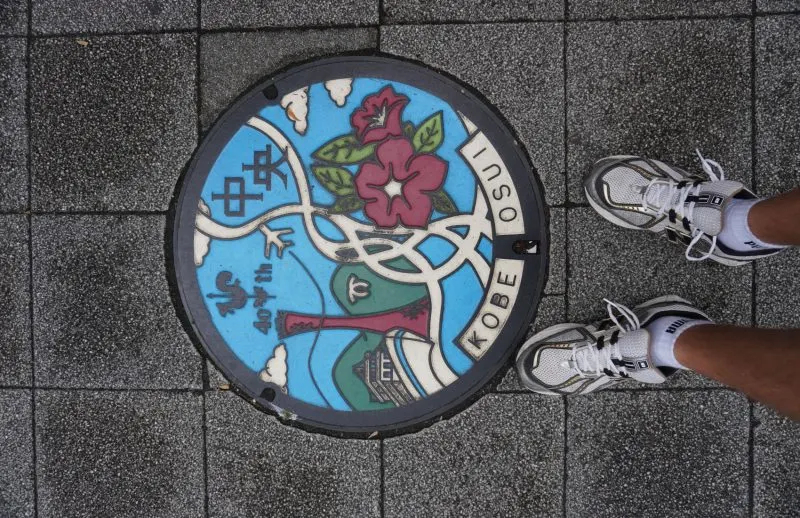
After you’ve explored everything that Osaka has to offer, it’s time to broaden your horizons! Kobe, Hiroshima, and Miyajima are perfect day trips you can take and still come back to your hotel in Osaka for a nightcap.
Personally, that’s exactly what we did: With just day packs on our backs, we perused the fast and furious services of the Japanese bullet trains and got to discover these fantastic cities, each so unique and different.
Kobe

✔️Kobe cheat sheet:
- How to get around Kobe? Just like in Osaka, the same ICOCA IC Card will make your movements to and around the city much easier (it works in all of the greater Kansai area). You can take a short but sweet shinkansen (bullet train) ride from Osaka to Kobe — just 15 minutes and you’re here! Another option you can look into is taking a small detour in Kobe on your way back from Hiroshima — just remember to keep your original ticket, and then you can top it off with some cash to finally reach your base in Osaka.
- Where to stay in Kobe? 4* The Royal Park Canvas Kobe Sannomiya (from $70 a night) — a perfectly located hotel, close to the train station and set right in the city center. But to tell you the truth, it’s much better to use Osaka as your base and go to Kobe purely in search of new experiences.
- What to book in advance for your time in Kobe? Nunobiki Herb Gardens and Ropeway and Kobe Animal Kingdom. Besides these experiences, the best things to do in Kobe are walking and eating!
A beautiful city not too far from Osaka, Kobe is world-famous for being the place where the finest beef — Kobe Wagyu beef — comes from. However, that’s not all that Koby’s wrapped up to be! Because of its rich history as a port, Kobe is also home to some unique tourist attractions and landmarks worthy of your time and money. It’s as multicultural as Japan can get!
Sandwiched between the sea and the mountains, this small town can be explored in just a few hours (at least its main sights, since it's pretty much impossible to get to know the place in such a short amount of time). So, when in Kobe, try and diversify your experiences (thankfully, the city has many sides to it) and visit the following attractions:
📍Kobe Port Tower: Referred to as “Steel Beauty”, this spectacular hourglass-shaped red structure is an iconic city landmark. The site is currently closed for seismic restoration, set to open in spring of 2024. Until then, the stunning views that open up from the tower’s viewing deck are unavailable to the public. The waiting’s going to be worth it, trust us!
📍Nunobiki Herb Gardens and Ropeway: One of the largest herb gardens in Japan, Nunobiki is a standalone, super aesthetically-pleasing and relaxing destination in Kobe, perfect for a chill afternoon. Take a 10-minute ride on the ropeway and enjoy the lush greenery (lavender and lily gardens were the highlights of our visit). Ticket to Nunobiki is ¥1440 / $9,7.

📍Kobe Maritime Museum: A cross between Sydney Opera House (the shape) and Louvre Abu Dhabi (the pattern), Kobe Maritime Museum is an architectural marvel and a true eye-candy set right by the water. At night, the structure is a stark contrast from the Kobe Port Tower: The swooshing strokes of green-illuminated roof construction of the museum are set against the tall and bright red tower complex. Inside, Kobe Maritime Museum is a wonderland of exciting maritime trivia — exhibitions are perfect for kids and adults alike! Admission is ¥900 / $6.
📍Akashi Kaikyo Bridge: World’s second largest suspension bridge (it was the first for more than 20 years, until 2022; when the newly opened Turkish 1915 Çanakkale Bridge took the title), it connects Kobe to Awaji Island. The sight of the bridge itself is great enough: Just think about the efforts it took to create such a monstrous structure! However, if you’re more of a doer than an observer, there are tours you can book that let you climb to the very top of the bridge’s towers (adrenaline junkies unite!).
Hiroshima

✔️Hiroshima cheat sheet:
- How to get around Hiroshima? If you’re serious about covering lots of ground in Japan, maybe start looking into a JR Pass. It makes sense to invest in it if you move around a lot, otherwise we would stick to single-trip tickets.
- Where to stay in Hiroshima? 2* WeBase Hiroshima — one of the more budget-friendly hotel options in Japan ($80 a night!) that we were lucky enough to experience during our last trip. Great location, as well as clean light rooms and spacious communal spaces make for a fantastic stay in Hiroshima.
- What to book in advance for your time in Hiroshima? A guided bike tour of the main tourist attractions is a great idea for the city where history is literally palpable when you’re exploring its streets. If you decide to kill two birds with one stone and explore both Hiroshima and Miyajima in one day, then a bus tour would be a perfect choice.
- Where to learn more about Hiroshima? Our detailed guide to Hiroshima should be more than enough to guarantee you have the best time in the city.
For me, visiting Hiroshima was a very moving experience. It felt strange to wander around streets that were completely and utterly destroyed when the A-bomb was dropped during WWII in 1945.
An entire city lost…
I couldn’t, and still can’t, grasp the enormity of that tragedy. When in Hiroshima, there are several places you must visit, to learn about the history of the city:
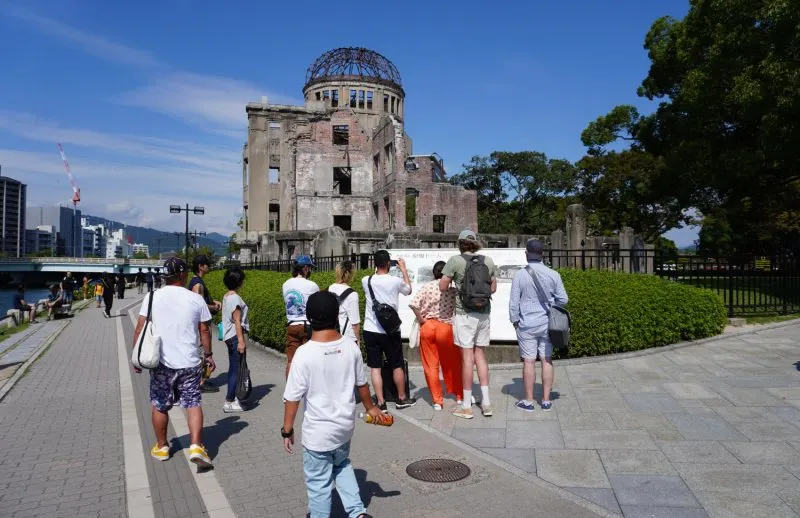
📍The Atomic Bomb Dome: The atomic bomb dropped by the United States Army detonated about 600 meters above this building, which is why it's still (partially) standing. It's a vivid reminder of the tragic history of Hiroshima.
📍The Children’s Peace Monument: This monument is dedicated to the children who died in the atomic bombing of Hiroshima.
📍Hiroshima Castle: The original castle was also destroyed by the atomic bomb, but has been reconstructed perfectly (like you could expect anything less in Japan). Explore the museum inside (¥370 / $2,5), wander the gardens, and admire the view from the top of the caste.
Check out my Hiroshima itinerary.
Miyajima

✔️Miyajima cheat sheet:
- How to get around Miyajima? First, you get on the island by ferry: From Hiroshima, take a train to the station nearest the pier — Miyajimaguchi Station, and then proceed onto the ferry. Both of these modes of transport are covered by JR Pass, so think about making this investment for your trip to Japan. While on the island, you can either rent a bike, walk, or hail a taxi — most of the sights are located quite close to each other, so you can see them in one day, easy.
- Where to stay in Miyajima? Accommodation options on the island are pretty out there, price-wise. However, you can find something affordable, if you look hard enough: Miyajima Guest House Mikuniya (from $70 a night) is a great choice for spending the night on the island.
- What to book in advance for your time in Miyajima? Apart from an obvious guided tour option, try and diversify your travel portfolio by booking a one-of-a-kind Kimono experience that comes clad with a tea ceremony and a calligraphy lesson.
- Where to learn more about Miyajima? Our Miyajima itinerary will make you want to start your Japan exploration with the island, but pace yourself: Good things come to those who wait!
From Hiroshima, we traveled to Miyajima Island (also called Itsukushima). Miyajima is a beautiful green island and a great place if you love outdoor activities like me.
Things to do are:

📍Itsukushima Shrine and the ‘floating’ Torii gate: This is definitely the most popular tourist attraction on Miyajima Island. The shrine is built over the water and supported by pillars. If you can, time your visit with high tide and the sunset for an unforgettable view.
📍Hike to the top of Mount Misen: Mount Misen is a 535 meters tall ‘mountain' on Miyajima Island. Three official trails lead to the summit, though you can also do part of the ascend by ropeway.
📍Daisho-in Temple: This ancient temple was founded in the year 80. Don’t miss the multicolored sand mandala, the beautiful lanterns hanging from the ceiling of the Henjokutsu Ichigandaishi cave and the many little statues found all around the complex.
Check out my Miyajima Island guide.
Day 9 – 11: Kyoto, Nara and Koyasan
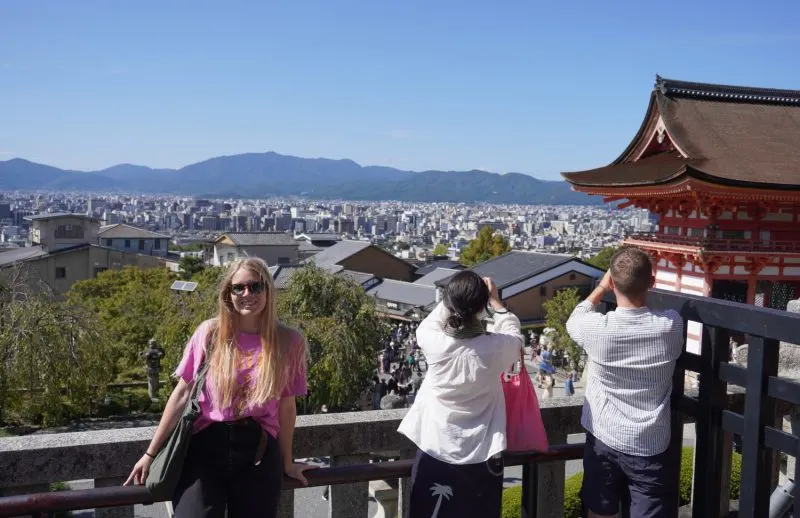
Both Nara and Koyasan are very interesting places to visit.
While Nara offers some of the most famous temples in Japan, Koyasan is considered a sacred place and remains a popular pilgrimage destination even today.
Moving on to a more “traditional” city in Japan (after all, it has been the country’s capital for more than a thousand years), we made our way to Kyoto.
Kyoto

✔️Kyoto cheat sheet:
- How to get around Kyoto? First, you need to know that the short trip from Osaka to Kyoto doesn't have to be by Shinkansen. You can get to Kyoto from Osaka station by train for 30 minutes and ¥580 / $4. When in the city, we did a lot of walking and occasionally hopped on the local trains to get to the shrines.
- Where to stay in Kyoto? Although during our last trip we still decided to keep Osaka as our home base and use Kyoto as one of our daytrip destinations, we can’t help but mention that there are great accommodation options in the city, and some of them pretty budget-friendly. Take 3* Tune Stay Kyoto (from $40 a night), for example, — it’s the best value hotel for the humble price tag in Kyoto! Clean rooms, great location, and excellent service will make you believe you’re paying hundreds of dollars for the experience.
- What to book in advance for your time in Kyoto? Exciting (and romantic) train (!) tour of Kyoto’s best sights, as well as a ticket to Kyoto Tower should be good enough to start your Kyoto adventure with.
- Where to learn more about Kyoto? Also known as the mother of all shrines, it’s easy to get lost in the myriad of sightseeing options of Kyoto (its “modern” side is pretty diverse as well). That’s why we encourage you to check out our Kyoto guide before commiting to the itinerary.
Kyoto with its many temples and other highlights was another great place to visit in Japan.
We strolled around the busy streets for two days (three nights) and didn’t nearly see everything there is to see in Kyoto…
🔹2024 Update: Another trip to Japan meant a well-overdue overhaul of all things we’ve first experienced in Kyoto. Our daytrip from Osaka to Kyoto (this time we opted against moving our luggage back and forth between the cities) was full with sights and experiences! Remember though, that Kyoto’s landmarks are pretty scattered, so you will spend quite a bit of time commuting between them. Because of that, we recommend you try and shake things up with some sort of activity; kimono rental should do the trick!
I liked the vibe of this beautiful city and the gorgeous weather didn’t hurt either. And again, the food… Oh Japanese cuisine, I would travel back to Japan today for a bowl of abura soba or ramen!
In any case, when in Kyoto, definitely visit these places:

📍Gion: Gion is the historic district of Kyoto, a maze of narrow streets and alleys lined with old (wooden) buildings, restaurants, cafes, and traditional teahouses. If you are lucky, you may even spot a real geisha!
📍Kinkakuji (the Golden Pavilion): Possibly the most famous construction in Kyoto, this temple was originally the retirement villa of the shogun Ashikaga Yoshimitsu. Later it became a temple and with its golden exterior and splendid architectural style, it's highly worth a visit (¥500 / $3,5).
📍Inari Fukushi shrine: For me, this was the highlight of our trip to Kyoto. You probably have seen many photos similar to the one pictured above (on the right), however, actually walking this famous path below the Torii gates yourself is a very special experience.
📍Kyoto Tower: The best way to get the feel for the city you’re visiting is looking at it from above! We have no idea why a lot of people consider the tower tacky and “ugly” (maybe it has something to do with the way Kyoto is advertised: Its not all historic districts and shrines like the internet makes it out to be), since we quite enjoyed looking at this tall structure and going up to its observation deck (¥900 / $6). A bird’s-eye view of Kyoto is like nothing you would expect; it’s a perfect way to finish your day in the city with: All the lights of the bustling city streets paired with shaded mountainous horizon make for a mind-boggling picture!
Check out my Kyoto itinerary.
Nara

✔️Nara cheat sheet:
- How to get around Nara? First, consider investing in some sort of travel pass for a more hassle-free experience: An ICOCA IC Card with Kansai Thru Pass should do the trick.
- Where to stay in Nara? Nara is a mere half-hour ride away from Kyoto by Shinkansen, so you don’t have to look for accommodation here unless you really want to explore the area in detail (a daytrip is more than enough for Nara, at least it was in our experience). Still, it’s nice to know that should you decide to spend the night in Nara, there would be some appropriate accommodation options: 3* Centurion Hotel Classic Nara (from $50 per night) and 4* Henn na Hotel Nara (from $40 a night) are both amazing and budget-friendly choices!
- What to book in advance for your time in Nara? A day tour of Nara is a great way to get to know the city without doing too much planning yourself.
Nara, while far from a big city, is home to about 400.000 people and is most well-known for its temples and deer. And we saw plenty of both during our one-day visit to Nara.
Some of the main attractions in Nara are:
📍Naramachi District: In the former merchant district of Nara, you can find traditional wooden houses, pretty little shops, art galleries, and much more. When strolling around this beautiful neighborhood, you will feel like you have stepped back in time.
📍Todaiji: Todaiji roughly translates into the Great Eastern Temple, a fitting name for this huge and impressive temple. Housing the world's largest bronze Buddha statue, a visit to this temple should definitely be on your Nara itinerary (¥600 / $4).
📍Nara Park: Go for a stroll in Nara Park, one of the oldest parks in Japan. Nara Park is home to hundreds of deer, which have become a symbol of the city. Several of Nara's highlights are located in the park as well, such as the aforementioned Todaiji, but also Kofukuji, and the Nara National Museum.
📍Nara Kingyo Museum: If you enjoyed Osaka’s teamLab experience, then you will absolutely love this museum in Nara! However, it's not so much a museum per se, the exhibitions inside are all goldfish-themed (!) and are better described as backdrops for stunning Instagram pics. Get your Alice-in-Wonderland fix and leave with tons of content for your socials!
Check out this great guide to Nara for more details!
Koyasan


✔️Koyasan cheat sheet:
- How to get around Koyasan? You’ve probably gotten your ICOCA IC Card already (about time, you’ve spent more than a week in Japan as of right now!), so use it to get to/around Koyasan.
- Where to stay in Koyasan? Accommodation options are few and far between in Koyasan; and most of them are pretty expensive. Still, there’s a fantastic opportunity here if you want to spend the night — a temple stay experience! For a price of around $100, you can stay at a real functioning Buddhist temple — Mitsugonin.
- What to book in advance for your time in Koyasan? There’s not a lot of “bookable” activities in Koyasan, so make do with simply walking around and enjoying the scenery, free of charge!
- Where to learn more about Koyasan? We go into more detail about the area in our guide to hiking the Koyasan Chōishi-Michi trail.
From Nara, we traveled to Koyasan, or Mount Koya, to be exact.
We hiked the 24km Koyasan Chōishi-Michi pilgrimage trail, definitely a highlight of our trip. The fog drifting through the forest made the entire experience magical and mysterious…
And if our trip to Koyasan wasn’t perfect enough already, the next day was sunny with a clear blue sky.
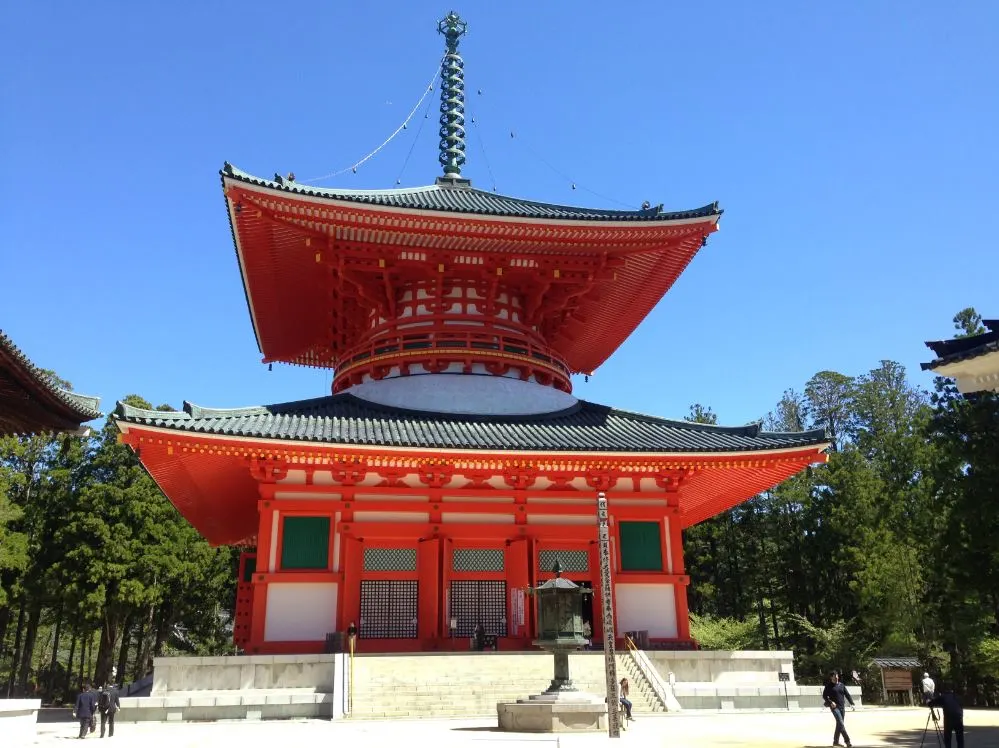
Some of the places in Koyasan you must visit are:
📍Okunoin: The oldest graves in this cemetery date back to the year 816. Okunoin is a UNESCO heritage site, with over 200.000 tombstones, many of them covered by thick layers of moss, and the Kobo Daishi's mausoleum.
📍Garan: This is Koyasan's central temple complex. Pictured above is the 45-meter-high vermilion Konpon Daito Pagoda, one of the most impressive buildings within the complex (¥1000 / $6,8). Another notable building is the Kondo Hall, a large wooden temple used for important ceremonies.
📍Daimon Gate: A magnificent two-story wooden gate that marks the end of the 24km Koyasan Chōishi-Michi pilgrimage trail. You'll be very happy to see this gate, it means you've finished your hike and made it all the way to Koyasan!
Check out my detailed guide to hiking the Koyasan Chōishi-Michi trail.
Day 11 – 18: Hokkaido (with and without a car)

Hokkaido is the northernmost island of Japan, and, in our opinion (though we may be biased), it's the most beautiful of the bunch. Famous for its flowering fields in the summer and the kick-ass slopes in the winter, it is a year-round destination that attracts tons of visitors from all over the world to the area.
- Speaking of tourists, maybe it's because the sights in question are quite remote or because they’re mostly set in vast natural landscapes, we didn’t feel suffocated by crowds, which is a fear many travelers have when visiting Japan.
Hokkaido is also every foodie’s dream: Their produce (particularly melons), seafood (crab and sea urchin), and milk-based foods (soft-serve ice-cream is the best in the biz on Hokkaido) will leave you full and happy!
The island, as naturally beautiful as it is in real life, can seem daunting to an unexperienced traveler: It’s not as “modern” as the rest of Japan. Even bullet trains go only as far as Hakodate (Hokkaido’s southernmost city, one of the few large cities on the island), and then it’s good old slow trains all the way to Sapporo.
Because of that, there are a couple of ways to enjoy Hokkaido: First, to set up camp in Sapporo and make use of the bus and train system to make day trips to notable locations in the vicinity, and second, to rent a car and have more freedom of choosing your destinations and change your plans on the go, depending on the weather.
Hokkaido without a car (Sapporo and daytrips from the city)

✔️Sapporo cheat sheet:
- How to get around Sapporo? Use the extensive Sapporo metro system and local trains.
- Where to stay in Sapporo? 3* Sapporo Tokyu REI Hotel (from $50 a night) — a perfect choice of a hotel that provides great value for the money. In Hokkaido, you won’t be spending too much time inside anyway: There’s so much waiting for you outside!
- What to book in advance for your time in Sapporo? All the day trips, obviously: We chose a tour to Noboribetsu and Lake Toya.
- Where to learn more about Sapporo? Our Hokkaido road trip itinerary has some unique insight into the city of Sapporo, so make sure to check it out before you go!
Most of you must have heard of Hokkaido’s capital through Sapporo Snow Festival (held each February, the ice sculptures of Sapporo are unlike anything we’ve ever seen) and the eponymous brand of beer — Sapporo. However, in true Japanese fashion, the city is practically teeming with possibilities to have the best time — high-end and vintage shopping, thousands of restaurants, and exciting landmarks.
Because of the time limits, we will focus more on the day trip destinations you can explore on the island — the city will still be waiting for you when you get back!
📍Hill of the Buddha: A marvelous Buddhist temple set in the most picturesque of places. Surrounded by lavender fields, with Easter Island-esque statues and a Bond-villain-ey pond in the vicinity, the temple is a must-see if you love to be surprised and aesthetically pleased by what you’re witnessing.

📍Lake Toya: Located about two hours away from Sapporo, Lake Toya is one of the largest caldera lakes in Japan (lakes formed in the hollowed out volcano). The scenery of the area is simply breathtaking; it helps to know that plenty of tours have the lake in their itinerary.
📍Otaru: A quaint port town set within an hour’s drive from Sapporo. Famous for its charming canals and historic fishermen’s mansions (also called Herring Mansions), Otaru is a perfect daytrip destination for people who enjoy exploring a new city at a leisurely pace. Sometimes referred to as the Venice of Japan, Otaru is the town with the right amount of fun and history, without the crowds.
📍Jozankei Onsen: A very popular destination in Hokkaido. The hot springs and autumn foliage create a unique setting for a day trip from Sapporo. Trust me, if you want to lose your onsen innocence, let your first time be at Jozankei Onsen: These hot springs will help you alleviate all the travel stress and long days spent exploring the country thus far.
📍Asahiyama Zoo: A perfect answer to the question of what to do in Hokkaido with children — pay a visit to Asahiyama Zoo! An activity that includes watching animals like penguins and polar bears is a win in our book.
Hokkaido road trip

During our very first trip here, I was already sold on Hokkaido when I was still on the plane (from Tokyo to Sapporo). From my window seat, I could see nothing but nature. And nature is what I love the most.
Cities are nice, but nature is best…
I loved our time on Hokkaido, the island is wild and untamed and completely blew me away with its natural beauty.
There are impressive volcanoes, extensive forests, and vast lakes. Also, it was cold! And I mean cold…

Hokkaido is a place where you'll be in awe but also grow healthy respect for nature.
The wind can be fierce and freezing, and we endured snow and hail but also got to enjoy days of sunshine and admire the famous cherry blossoms (sakura).
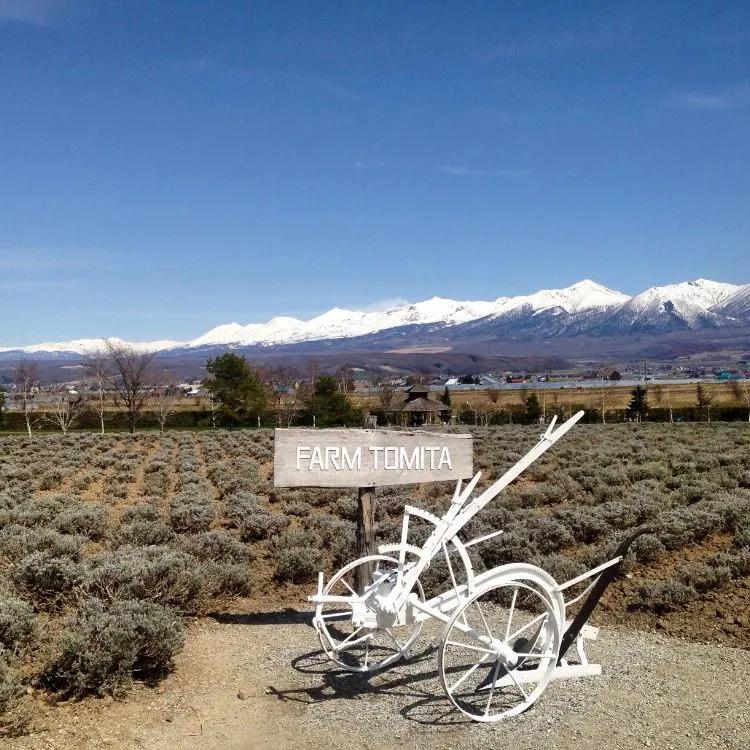
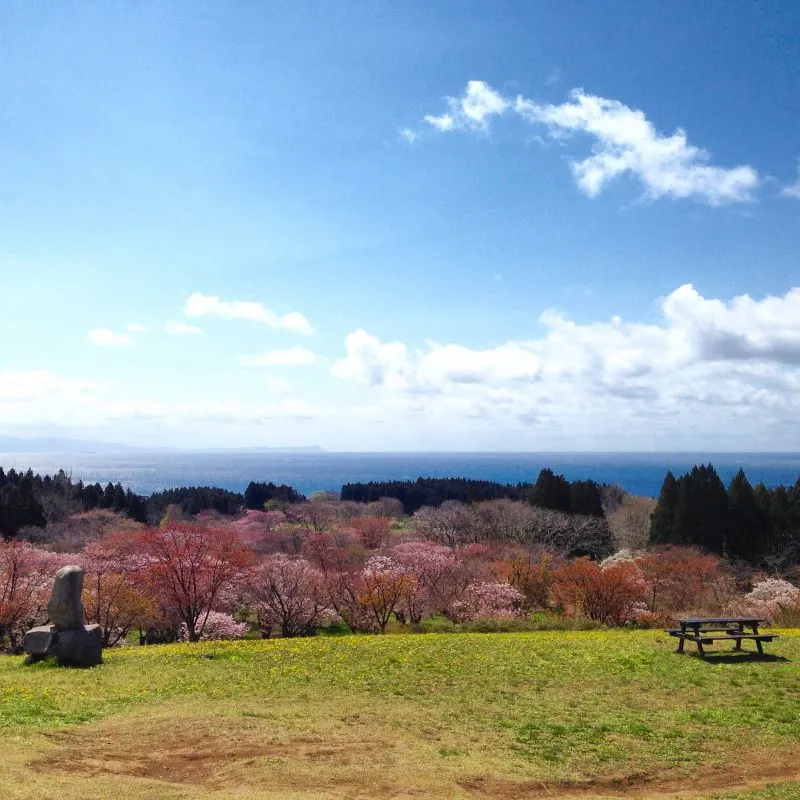
We explored Hokkaido by car, which in my opinion is the best way to get around this island.
We discovered places we wouldn’t have been able to visit if we didn’t have a car and each of those places was absolutely incredible.
A couple of the highlights of our Hokkaido trip were:
📍Matsumae Castle: A beautiful traditional Edo-style castle surrounded by thousands of cherry blossom trees. Matsumae Castle is worth a visit during any time of the year but is particularly stunning during sakura.
📍Furano: My favorite small town on Hokkaido with a myriad of things to do. You can visit a cheese or wine factory (or both), go for a hike, admire the vivid Blue Pools, and much more. Stay here for at least two nights if you have time!
📍Shikisai no Oka: The most Instagrammable destination on the island, with vast rolling hills covered in a patchwork rotation of flowers. Amsterdam’s tulip fields don’t stand a chance in front of Shikisai no Oka! Don’t believe me? Come here and decide for yourself!
Check out my Hokkaido road trip guide.
Day 18 – 28: Tokyo

✔️Tokyo cheat sheet:
- How to get around Tokyo? There are quite a few pass options you can look into: Tokyo Subway Ticket for unlimited rides, or a Welcome Suica Pass.
- Where to stay in Tokyo? We chose 3* Almont Inn Tokyo Nihonbashi (from $55 a night) — a great hotel within walking distance of Ginza, one of our favorite neighborhoods in Tokyo. From Pokémon to Godzilla, early morning fish markets, and high-end shopping, — Ginza will always leave you wanting more!
- What to book in advance for your time in Tokyo? Tokyo Sky Tree and Shibuya Sky admission tickets, as well as possible day outings to Warner Bros. Studio (The Making of Harry Potter) and Mt Fuji.
- Where to learn more about Tokyo? Our 7-day itinerary is the ultimate guide for all things Tokyo, check it out!
Of course, no visit to Japan is complete without exploring Tokyo.
The city of flashing neon, Lolita dresses and other quirky looks, hidden alleys, ancient temples, the famous Tokyo Sky Tree, and the most Michelin stars of any city in the world. Tokyo offers days (or should I say months) of activities.
Tokyo is the most populous metropolitan area in the world. While the city center can be extremely busy at places like Tokyo Station and Shibuya Crossing, there are also much more quiet areas, like lovely Ueno Park.
We've visited Tokyo several times, twice for several days and once during a stopover. During our last visit we were lucky enough to spend an entire week in Tokyo, which was definitely the highlight of our entire Japan experience! With each trip, we discover more to see and do in this unique capital, mixing ultramodern and ancient traditions!
Some of the top things to do are:

📍Asakusa and the Senso-Ji Temple: Don't miss this beautiful historic neighborhood in Tokyo. Here you can find quaint little streets, boutique shops, and the impressive Sensō-Ji temple.


📍TeamLab Digital Art Museum: This amazing interactive museum creates a fairytale world filled with light and colors. Be sure to buy a ticket online (¥3800 / $25) as they often sell out! It’s also good to note that the neighborhood adjacent to the museum — Odaiba — is definitely worth a detour during your visit to the area.
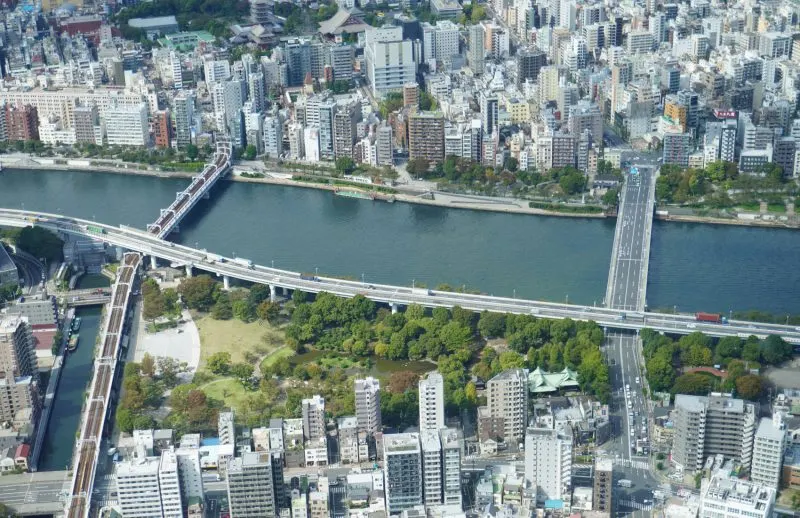
📍The Tokyo Sky Tree: The Tokyo Sky Tree is currently the third-tallest building in the world (after Burj Khalifa in Dubai and Merdeka 118 in Kuala Lumpur). It is still, however, the tallest tower in the world! There are two observation decks, one at 350 meters and at 450 meters high, offering impressive views over Tokyo city. Book your ticket online (¥1800 / $12 ) to save money and skip the queue.
📍Shibuya Sky: Another viewpoint with stunning views of Tokyo. Come here if you haven’t secured the very sought-after Tokyo Sky Tree ticket and enjoy your time with less crowds and more open city panoramas. Book your ticket here (¥2200 / $15) and don’t forget to learn more about Shibuya neighborhood in this article.
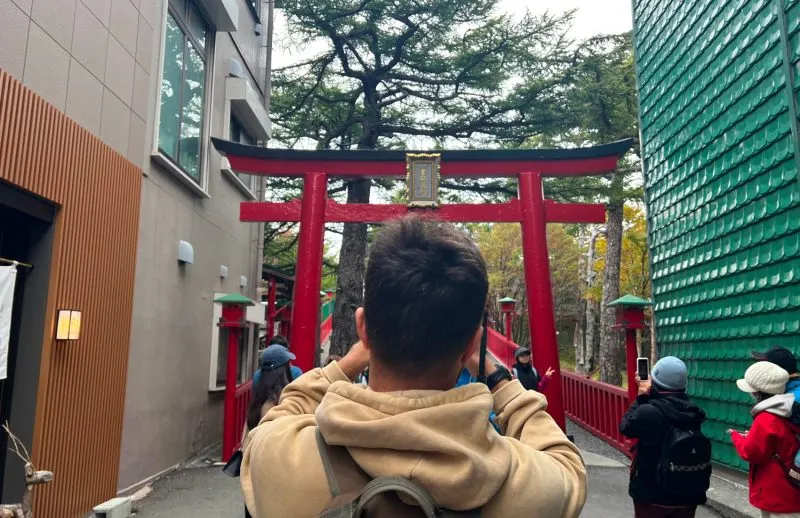
📍Daytrips from Tokyo: After you’ve exhausted all the main city attractions (although it’s quite an impossible task, just look at our week in Tokyo itinerary here, it’s time to look outside Tokyo limits! Warner Bros. Studio Harry Potter (¥6300 / $42), Tokyo Disney Resort Park (¥8400 / $56,5), and Mt Fuji are the top choices that you can start with. Although we doubt you’ll have the time or energy for more — each of these locations requires an entire day to experience!
Check out my Tokyo itinerary and what to do in Tokyo with kids.
Day 28 – 33: The Japanese Alps
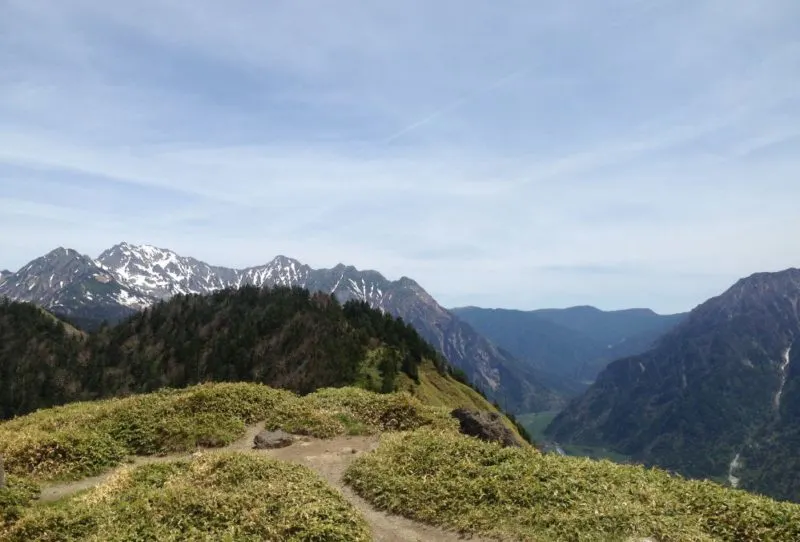
✔️The Japanese Alps cheat sheet:
- How to get around the Japanese Alps? Bus passes (some with add-ons like a ropeway ticket included) are the most obvious transportation options, in our opinion.
- Where to stay in the Japanese Alps? Depending on how much of your travel budget is left after an entire month in Japan, you can either treat yourself to a luxurious stay in 4* Takayama Green Hotel (from $120 a night) or resort to spending the night at 3* Alpico Plaza Hotel (from $40 per night). What will it be?
- What to book in advance for your time in the Japanese Alps? If you’re unsure how to navigate the many towns and locations that make up the Japanese Alps, an organized day tour will be the perfect way to go about it!
- Where to learn more about the Japanese Alps? Our Japanese Alps itinerary will make even the idlest homebodies into avid hiking enthusiasts in record time, that’s a guarantee!
Though our entire trip around Japan was amazing, the Japanese Alps were definitely one of my favorite areas. After all, getting outside city limits is one of the crucial tips to enjoying your time in Japan to the fullest (what are other things you should know before traveling to the Land of the Rising Sun?)
I love mountains, though unfortunately, we don’t have any near my home town. I also love hiking and this is something we did a lot in the Alps.
Kanazawa
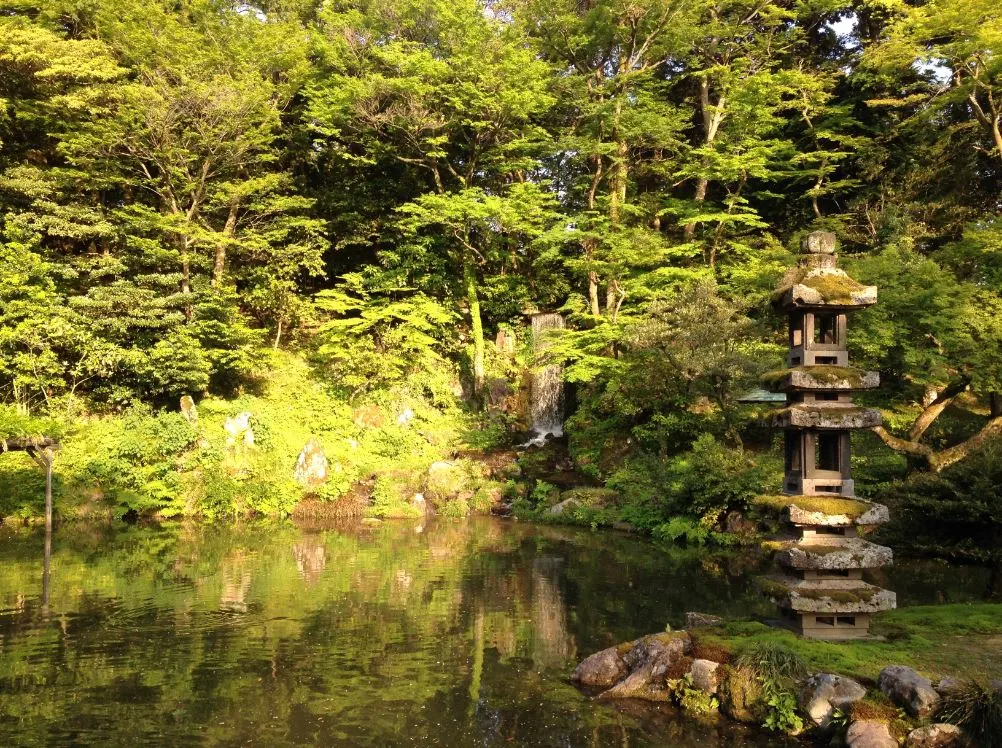
We started our journey through the Alps in Kanazawa to stroll around the lovely Kenruko-en garden.
Shirakawa-go

The next day we got on a bus to Shirakawa-go, famous for its traditional gassho-zukuri farmhouses, some of which are more than 250 years old!
Takayama

The next city on our Alps itinerary was Takayama, where we explored the old neighborhoods and Hida Folk Village.
Kamikochi

The absolute highlight of our Japan trip was Kamikochi, one of the most beautiful places I have ever seen.
I spent three days in Kamikochi. We were surrounded by stunning mountains and scaled a volcano (Mount Yakedake).
We slept in our little tent at a very well-managed campsite and wandered around the valley. Suffice it to say, I was completely and utterly happy.
Matsumoto
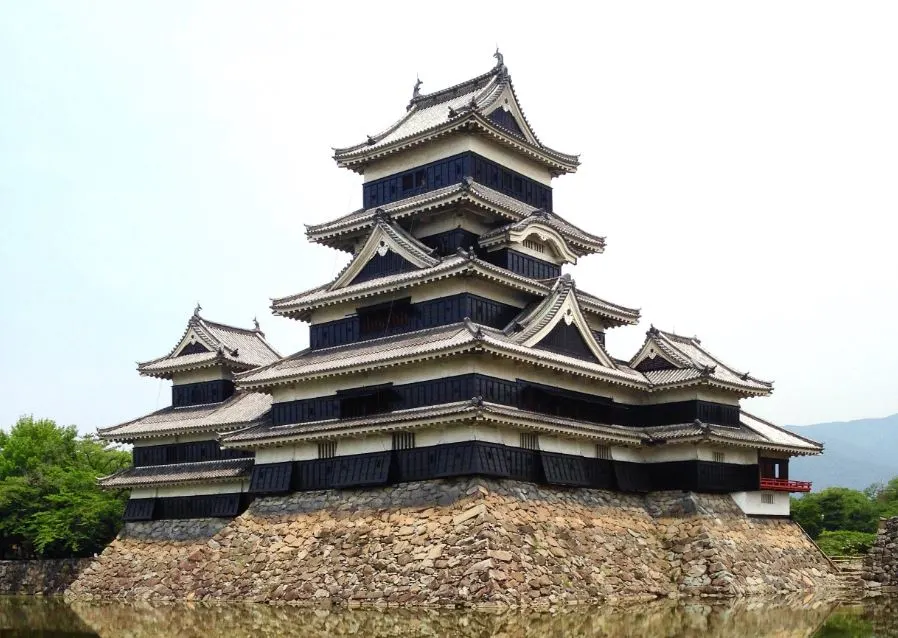
Last but not least we visited the beautiful castle in Matsumoto, one of Japan's most famous and well-preserved historic castles.
During our second trip to Japan, we spent 3 nights in Matsumoto, it's a very convenient hub to explore the Japanese Alps and a nice city as well.
Check out my Japanese Alps itinerary and Kamikochi camping and hiking guide.
Day 34: Goodbye Japan…
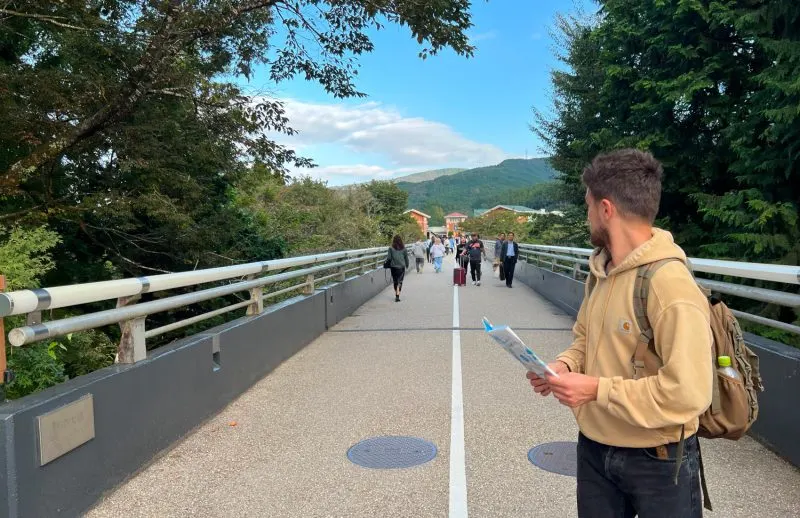
Our flight back home was from Tokyo, so we changed the snowy mountain peaks for bustling city streets for our last day here. I was sad to leave because we had such an amazing month in Japan…
From the wilds of Hokkaido with its hauntingly beautiful nature and its bitter cold to the tragic and terrible history of Hiroshima.
From the floating Tori gate of Miyajima to the peaks of Kamikochi, the temples in Kyoto, and the mysterious forest of Koyasan, it was a wonderful trip. And that’s not even taking into account all the delicious Japanese food!
Japan is an amazing country and I highly recommend adding Japan to your travel bucket list, you won't regret it.

Alternative Japan itineraries (7 and 10 days + 2 and 3 weeks)
Japan itinerary 7 days
If you just have 1 week in Japan, don’t worry! While you cannot see everything the country has to offer, you can get a taste and feel of the country. Here is my suggestion for a 7-day Japan itinerary:
- Day 1-2: Explore Tokyo
- Day 3: Make an easy day trip from Tokyo to Mount Fuji (one of the most popular destinations in Japan), Kamakura, or Nikko
- Day 4: Take the Shinkansen to Kyoto (2 hours and 15 minutes) and explore Kyoto
- Day 5-6: Explore Kyoto
- Day 7: Return to Tokyo and fly home (you can also fly out from Osaka)

10 day Japan itinerary
This Japan 10-day itinerary includes big cities such as Tokyo and Kyoto, but also the beautiful nature of Koyasan and the famous temples (and deer) in Nara.
This Japan 10 days itinerary isn't too fast-paced, however, you will get to visit five very different places in Japan:
- Day 1-2: Explore Tokyo
- Day 3: Make a day trip from Tokyo to Mount Fuji, Kamakura, or Nikko
- Day 4: Take the Shinkansen to Kyoto (2 hours and 15 minutes) and explore Kyoto
- Day 5-6: Explore Kyoto
- Day 7-8: Hike the Koyasan Chōishi-Michi pilgrimage trail and explore sacred Koyasan
- Day 9: Visit Nara
- Day 10: Fly home from Osaka

Japan 2 week itinerary
This 2 week Japan itinerary includes the major highlights of Japan, without rushing around the country.
During your 2 weeks in Japan, you'll visit the major cities of Tokyo, Kyoto, and Hiroshima and get to enjoy some beautiful nature (and temples) in Koyasan and on Miyajima island.
- Day 1-3: Explore Tokyo
- Day 4: Make a day trip from Tokyo to Mount Fuji, Kamakura, or Nikko
- Day 5: Take the Shinkansen to Kyoto (2 hours and 15 minutes) and explore Kyoto
- Day 6-7: Explore Kyoto
- Day 8-9: Hike the Koyasan Chōishi-Michi pilgrimage trail and explore sacred Koyasan
- Day 10-11: Travel to Hiroshima and learn about the tragic history of the city
- Day 12-13: Go hiking on Miyajima island and admire the famous floating Torii gate
- Day 14: fly home from Osaka

Japan 3-week itinerary
With this 3 week Japan itinerary, you get to experience very different sides of Japan. You’ll explore several interesting cities, spend a night in Koyasan, and hike around the Japanese Alps.
When you have 3 weeks in Japan, I suggest the following route:
- Day 1-3: Explore Tokyo
- Day 4: Make a day trip from Tokyo to Mount Fuji, Kamakura, or Nikko
- Day 5: Take the Shinkansen to Kyoto (2 hours and 15 minutes) and explore Kyoto
- Day 6-7: Explore Kyoto
- Day 8-9: Hike the Koyasan Chōishi-Michi pilgrimage trail and explore sacred Koyasan
- Day 10-11: Visit Nara
- Day 12-13: Explore Osaka
- Day 14-20: Travel around the Japanese Alps (Kanazawa, Shirakawago, Takayama, Kamikochi, and Matsumoto)
- Day 21: Fly home from Tokyo
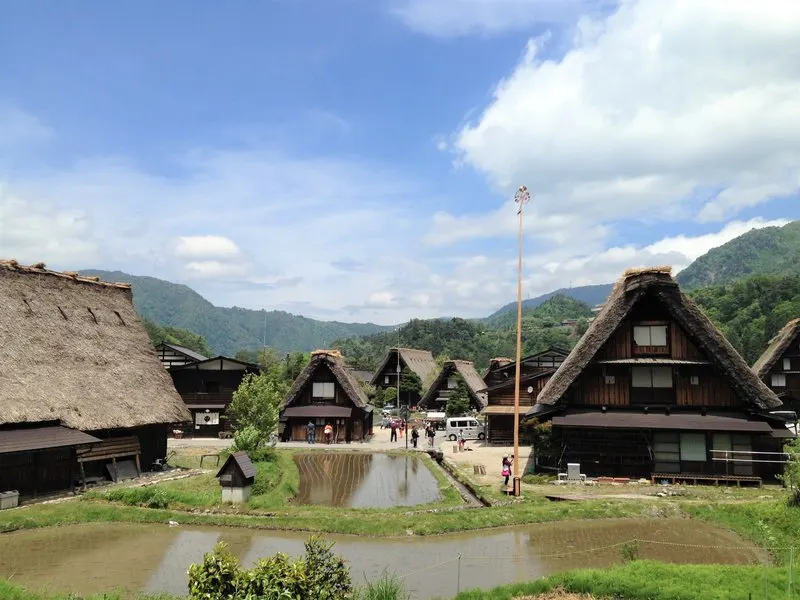
Plan your Japan trip like a pro with these tools:
✅ Get a Japan Railpass to save lots of time and money.
✅ Rent a car for your Japan road trip via Rentalcars.com.
✅ Stay connected with Airalo Japan offer.
✅ Plan your journey with the Japan Lonely Planet.
✅ Find the best hotel deals on Booking.com.
✅ Join the best tours in Japan via Klook.
✅ Travel safely and get reliable travel insurance from Safety Wing.
Important things to know when planning a trip to Japan
What is the best time to visit Japan?

While Japan is a year-round destination, the best and most popular times to visit are March–May and September–November.
Sakura (the famous cherry blossom season) is very important in Japan and there is even a daily Cherry Blossom report with up-to-date information on where the flowers are at their most beautiful.
The changing color of the leaves in Autumn is almost equally popular, there is a daily report to monitor this as well.
We visited once in late April-May and once in October and had very comfortable temperatures and mostly sunny weather.
The winter months can be extreme with freezing temperatures and lots of snow, especially in the Alps (Honshu) and on Hokkaido. That being said, if you want to go skiing or visit the famous Sapporo snow festival, consider planning a winter trip to Japan.
The summer months are hot and humid and not the most comfortable time to visit Tokyo or Kyoto. Be sure to pack appropriately!

Which currency is used in Japan?
The official currency in Japan is the Japanese Yen (¥). Here you can find the current exchange rates, at the time of writing €1 is approximately ¥160 and $1 is around ¥150.
How to travel around Japan?
Japan has an excellent public transport system and is famous for the shinkansen, also known as the bullet train (pictured below).
During both our trips to Japan, we mostly traveled by public transport (train, bus, MRT, and ferry).
Travel by train in Japan

If you plan on covering large distances in Japan within a short period of time, I highly recommend buying the Japan Rail Pass.
This pass gives you unlimited trips on all JR trains, JR buses, and several other lines. You can choose a pass valid for 7, 14, or 21 consecutive days.
While the Japan Rail Pass offers great value for money it may not always be the most economical option for your trip. It's worth calculating the costs of your itinerary to Japan with and without the rail pass to see which option is best for you.
You can use Hyperdia to check the costs of your intended Japan itinerary and decide whether or not the JR Pass is worth the money for your trip.
Rent a car in Japan

If you plan to visit the more remote areas in Japan, public transport isn't your best bet. For our road trips to Hokkaido and Shikoku, we rented a car.
The public transportation network on these islands isn't as great as on Honshu, plus, driving on these islands is an awesome experience. Read more about driving on Hokkaido here.
Which car rental service is the best?
If you're looking for a car rental service for your trip, I recommend Rentalcars. I've used this international car rental booking service myself many times and you'll definitely find the most appropriate car for your Japan itinerary. >Click here to rent your car.

Where to stay in Japan on a budget
I have to admit I was slightly worried about finding affordable accommodation before traveling to Japan, the country of the rising sun.
This is why I searched Agoda, Booking, and Tripadvisor meticulously to find the best possible options.
While we definitely spend more on accommodation during our Japan family trip than when we were backpacking Japan as a couple (with a tent), I can say from personal experience that it is possible to find (relatively) cheap places to stay in Japan.
But let's also face the fact that prices in Japan are not like in Southeast Asia, you won't be able to find a pretty pool villa for €25 a night…
Read more about our Japan travel budget here.
The best budget tip to save on accommodation in Japan
Go camping! During our first Japan trip, we brought a small tent and stayed at several campsites around Japan, which were only $10-$15 a night.
Another advantage is you get to wake up with views like the one in the picture below.

Here is a list of all the places we stayed during our travels around Japan.
| Location | Where to stay | Price | Book/info |
|---|---|---|---|
| Tokyo | Candeo Hotels Shimbashi* | €185 / $200 | Book here |
| Lake Shikotsu | Campsite Morappu | €12,90 / $14 | Read more |
| Lake Toya | Nakatoya Camping Ground | €7,40 / $8 | Read more |
| Hakodate | Share Hotels Hakoba Hakodate | €55 / $60 | Book here |
| Fukushima | Roadside Rest Area Fukushima | free | Read more |
| Toyako Onsen | Toyako Parking Lot | free | (see map) |
| Furano | Shin Furano Prince hotel** | €275/$300 | Book here |
| Sōunkyō | Parking lot next to 7-11 | free | (see map) |
| Akanko Onsen | Shizen Koen Parking Lot | free | (see map) |
| Sapporo | Hotel Areaone Chitose | €49/$53 | Book here |
| Hiroshima | WeBase Hiroshima | €74/$80 | Book here |
| Miyajima | Campground Tsutsumigaura | €8,30/$9 | Read more |
| Nara | Centurion Hotel Classic Nara | €46/$50 | Book here |
| Koyasan | Koyasan Guesthouse Kokuu | €66/$71 | Read more |
| Kyoto | Tune Stay Kyoto | €37/$40 | Book here |
| Kanazawa | APA Hotel Katamachi | €36/$39 | Book here |
| Takayama | Guesthouse Tomaru | €45/$49 | Book here |
| Kamikochi | Konashi-daira campsite | €13,40/$14,50 | Read more |
| Matsumoto | Alpico Plaza Hotel | €57/$62 | Book here |
| Narita airport | Narita Tobu Hotel | €71/$77 | Book here |
* Read more about our stay at Cando Hotel Shimbashi here.
** Unfortunately the accommodation we stayed at in Furano during our Hokkaido trip is no longer available. While we didn't personally stay at the Shin Furano Prince hotel we did visit their spa twice during our time in Furano.
Note: Prices for the hotels, campgrounds, and guesthouses depend on the time of year and how far in advance you book. Click ‘book here’ to see the latest prices on Booking and book ahead to get the best deal.
Golden Week
Golden Week is the period from the 29th of April to early May and includes a number of Japanese holidays.
During this week many Japanese people go on holiday and accommodation can be extremely difficult to find.
If you are traveling in peak season and Golden Week in particular: book your accommodation in advance!
During our first trip to Japan, I was looking for accommodation for a night during Golden Week. I have never seen Agoda and Booking come up with only 2 available hotels in an entire city, the cheapest one was €400 a night…
I was very happy to have our tent and car as backup options!
Japan recommended itinerary: in conclusion
I hope this post has given you an idea of what to see in Japan, you can download the map of our Japan one-month itinerary below.
If you have any questions, leave a comment or send me a message.


This post was updated in February 2024.

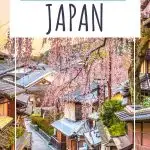




Geoff
Friday 27th of October 2023
Well it’s now 2023, ( what happen to 2020 - 2022, I wonder, little virus, unfortunately ? ) and we are thinking October 2024, I hope nothing has changed . Great article .
Cedric
Sunday 4th of September 2022
Is there anything to consider when renting a car in Japan? Or something you have to do in advance that you are allowed to rent a car at all? I am planning to go on a road trip with my friends.
Lotte
Tuesday 6th of September 2022
Hey Cedric,
Thanks for reading! Regarding your question, you may want to check out my guide to driving on Hokkaido: https://www.phenomenalglobe.com/driving-on-hokkaido-japan-road-trip/. Many of the tips mentioned here are applicable for entire Japan. Most importantly: don't forget to bring a Geneva Convention International Driver’s Permit. You must have one in order to rent a car.
Have a great trip and let me know if there's anything else you need help with! Lotte
Daniel
Wednesday 6th of January 2021
Fantastic itinerary. I will keep this in mind for the next time I travel:-)
Lotte
Thursday 7th of January 2021
Thank you Daniel, let's hope we can travel (safely) again in the near future:-)
Brendon
Sunday 8th of September 2019
HI there,
Did you get any vaccinations for your trip to Japan? Specifically, for Japanese Encephalitis?
Cheers, Brendon
Lotte
Monday 9th of September 2019
Hi Brendon,
Thank you for your email and we didn't get any vaccines specifically for Japan. However, we already had many vaccines (Hep A&B, MMR and tetanus etc). We did not get the Japanese Encephalitis vaccines, though I'm no medical expert so I don't feel qualified to give any advice regarding health issues. I recommend to check with your doctor and discuss the pros and cons with him/her:-). Have a great trip to Japan!
Lotte
Alex Ek
Thursday 13th of June 2019
Hello! I am wondering how you contacted the campsite in Miyajima. Thank you so much for this blog! It’s really helped a lot!
Lotte
Thursday 13th of June 2019
Hi Alex,
Very welcome! I actually didn't contact the campsite, we just showed up:-) Sorry I can't be more help. Have a great trip!
Lotte